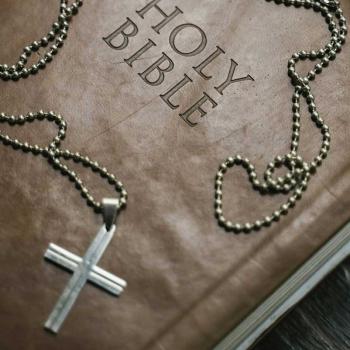Becoming a Disciple
John 1:35-50 has several vignettes about Jesus' first disciples. Two rather timidly approach Jesus on the advice of their teacher John the Baptist's prophetic recognition of the Jesus as the Lamb of God (Jn. 1:35-39). Peter joins when his brother Andrew tells him they have found the Messiah (Jn. 1:40-42); these men were apparently seeking something more than a mere teacher. Philip follows when Jesus rather abruptly summons him (1:43-44), while his friend Nathanael accepts Jesus as "Son of God" and Messiah/"King of Israel" when Jesus prophetically sees him under a fig tree. Thus, each disciple followed Jesus for his own reasons and with his own expectations. Discipleship for many of them seemed to have meant leaving families and homes to follow the new King Messiah.
Women Disciples?
The gospel narratives make it clear that a number of women regularly followed Jesus (Lk. 8:1-3). Would these women have been considered disciples of Jesus according to the understanding of first-century Jews? Certainly women played an important role in early Christianity, and many women followed Jesus and traveled with him, but it is not clear if they would have been considered disciple/students in the first-century Jewish sense. Women were generally not admitted in traditional Jewish teacher-disciple system during this period. No woman is ever expressly called a disciple of Jesus in the gospels—though one Christian woman is called a disciple (mathētria) in Acts 9:36.
The Book of Messianic Signs (John 2-12)
Chapters 2-12 of John are often called the "Book of Signs." These chapters are organized into a series of incidents alternating between a miraculous sign and a discourse on the messianic meaning of the sign. "Sign" is a technical term in John for a demonstration of the divine authenticity of Jesus as the Messiah. In Greek, the term "sign" is sēmeion, meaning a token by which someone is known or a miraculous wonder. John uses the word sign in both of these senses: a miraculous token by which Jesus can be recognized as the Messiah.
The first half of the Gospel of John is organized around seven great signs.
- Changing water to wine at Cana (2:1-11).
- Healing the official's son in Cana (4:41-54).
- Healing a lame man on the Sabbath at the pool of Bethesda in Jerusalem (5:1-15).
- Feeding the five thousand (6:5-13).
- Walking on waters of the Sea of Galilee (6:16-21).
- Healing the man born blind at Jerusalem (9:1-7).
- Resuscitation of Lazarus at Bethany (11:1-44).
Throughout John's Gospel, Jesus performed his signs not merely as acts of compassion—though they certainly were that—but as acts of power to manifest the glory of God (2:11) and demonstrate that he is the Messiah. The Jews seem to expect that Messiah will perform such signs (2:18, 4:48, 6:30, 7:31, 9:16), and when they see Jesus' signs some accept him as the Messiah (2:23, 3:2, 4:48, 6:14). Whereas John condemns the Jews for not accepting the marvelous signs of Jesus, the Synoptic Gospels depict Jesus as condemning the Jews as "an adulterous generation" for seeking such signs (Mt. 12:39, 16:4; Mk. 8:11-12; Lk. 11:16, 29-30). No such condemnation of sign seeking is found in John.
The expectations that the Messiah will perform signs is based on prophetic "signs and wonders" of Old Testament prophets. Some of Jesus' signs parallel ancient prophetic signs:
- multiplication of loaves (Jn. 6:1-15) = manna (Ex. 16; Num. 11)
- walking on water (Jn. 6:16-21) = crossing the Red Sea (Ex. 14);
- raising Lazarus (Jn. 11) = Elijah raising the widow's son (1 Kg. 17:21-23).
John notes that there were "many other signs . . . which are not written in this book" (20:30), meaning that he specifically selected these signs for a reason. I'll explore the details of these signs, and their symbolism related to the Messiah in later columns.
The Book of Messianic Signs ends, however, with this statement: "though he had done so many signs before them, they still did not believe in him" (Jn. 12:37). For John, the signs of Jesus should have been enough to demonstrate that he was the Messiah, but he was rejected nonetheless. Thus, the first half of John establishes the signs and teachings by which Jesus demonstrates he is the Messiah, and the second half (Jn. 13-21) deals with his "hour": the consequences of the rejection of his Messianic claims culminating in his death and resurrection.
Wedding at Cana (2:1-12)
The story of the wedding at Cana has a few incidental references to Jesus' family background. The text mentions his mother (2:1) and brothers (2:12). In John, however, Jesus' mother is never named, though his father Joseph is (1:45, 6:42). Jesus' mother and brothers are all attending the wedding, which may indicate that a member of Jesus' family was getting married. This is further implied by the fact that Jesus' mother is involved in the behind the scenes food preparation (2:3).





